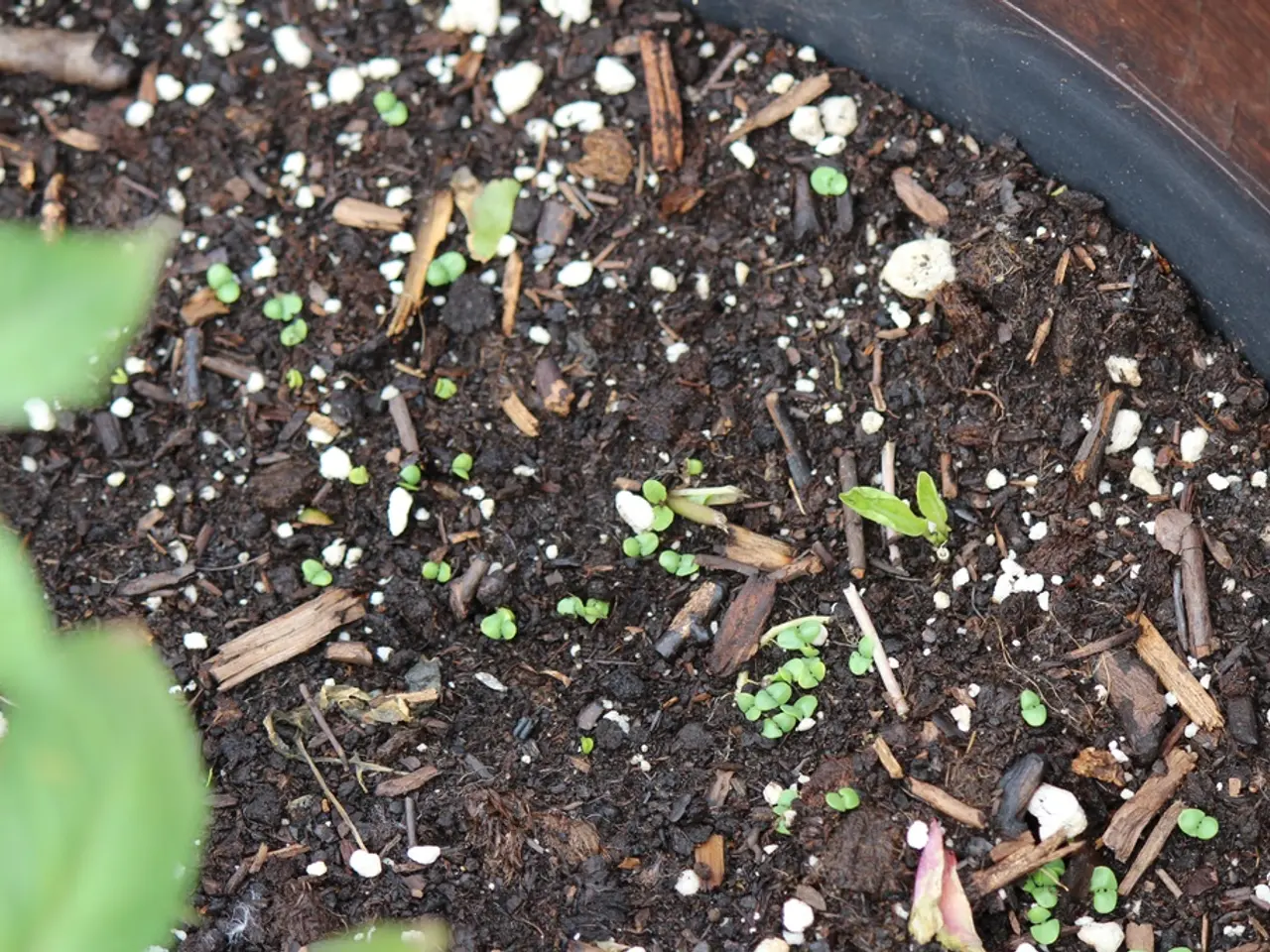Enhancing Clay Soil for a Thriving Garden: Unveiling Tips for Effective Growth and Cultivation
In the pursuit of a flourishing garden, understanding and addressing the unique challenges of clay soil is essential. Here's a guide to help you transform your clay soil into a thriving ecosystem for a variety of plants.
Clay soil, while rich in nutrients, is naturally dense due to its fine particles that clump together, restricting air and water movement. To improve its structure and health, the most effective method is to regularly add organic matter such as compost, farmyard manure, leaf mould, or cover crops. Organic matter helps to lighten the dense, sticky nature of clay by creating air pockets, improving drainage, and encouraging beneficial soil life that breaks up soil compaction.
Additional proven techniques include aeration and breaking up compaction physically to increase air circulation and water infiltration. Deep-rooted plants like daikon radish or tiller radish, which naturally penetrate and create channels in compacted clay, are also beneficial. Fibrous-rooted plants such as rye aid soil texture improvement. Mulching with organic materials, building raised beds, adding amendments like coffee grounds, and even using plants like Indian Grass, Big Bluestem, Tickseed, and Coneflower can contribute to a healthier clay soil ecosystem.
Choosing plants adapted to clay soil is important for successful gardening. Plants such as Daylily, Cup Plant, Asters, Coneflower, Perennial Sunflower, New York Ironweed, Astilbe, Hostas, Wild Bee Balm, Compass Plant, Black-Eyed Susan, Indian Pink, Goldenrod, Drooping Coneflower, Canadian Wild Rye, Sea Holly, Switch Grass, Autumn Joy Sedum, and Prairie Blazing Star are all well-suited to clay soil conditions.
By loosening the soil and incorporating organic matter, you'll create a more hospitable environment for plant roots, earthworms, and beneficial microorganisms. When working with clay soil, it's crucial to avoid working with wet clay, as it will become hard and brick-like when it dries.
Butterfly Weed, a North American native, and the vibrant Prairie Blazing Star are excellent choices for those seeking plants that can handle tough clay conditions. These plants, along with others listed, will not only thrive in your clay soil but also attract a variety of pollinators, making your garden a haven for wildlife.
In summary, the key to improving clay soil health is consistent incorporation of organic matter combined with physical soil management techniques that reduce compaction and increase biological activity. With patience and the right approach, you can transform your clay soil into a vibrant, thriving garden.
Incorporating organic matter like compost and mulching with organic materials can help improve the structure of your home-and-garden, specifically the clay soil, creating a more hospitable environment for plant roots and beneficial soil life. To further enhance the health of the clay soil in your home-and-garden, consider selecting plants adapted to clay soil, such as Daylily, Cup Plant, and Prairie Blazing Star, which are well-suited to these conditions and can thrive in your lifestyle while attracting pollinators.




